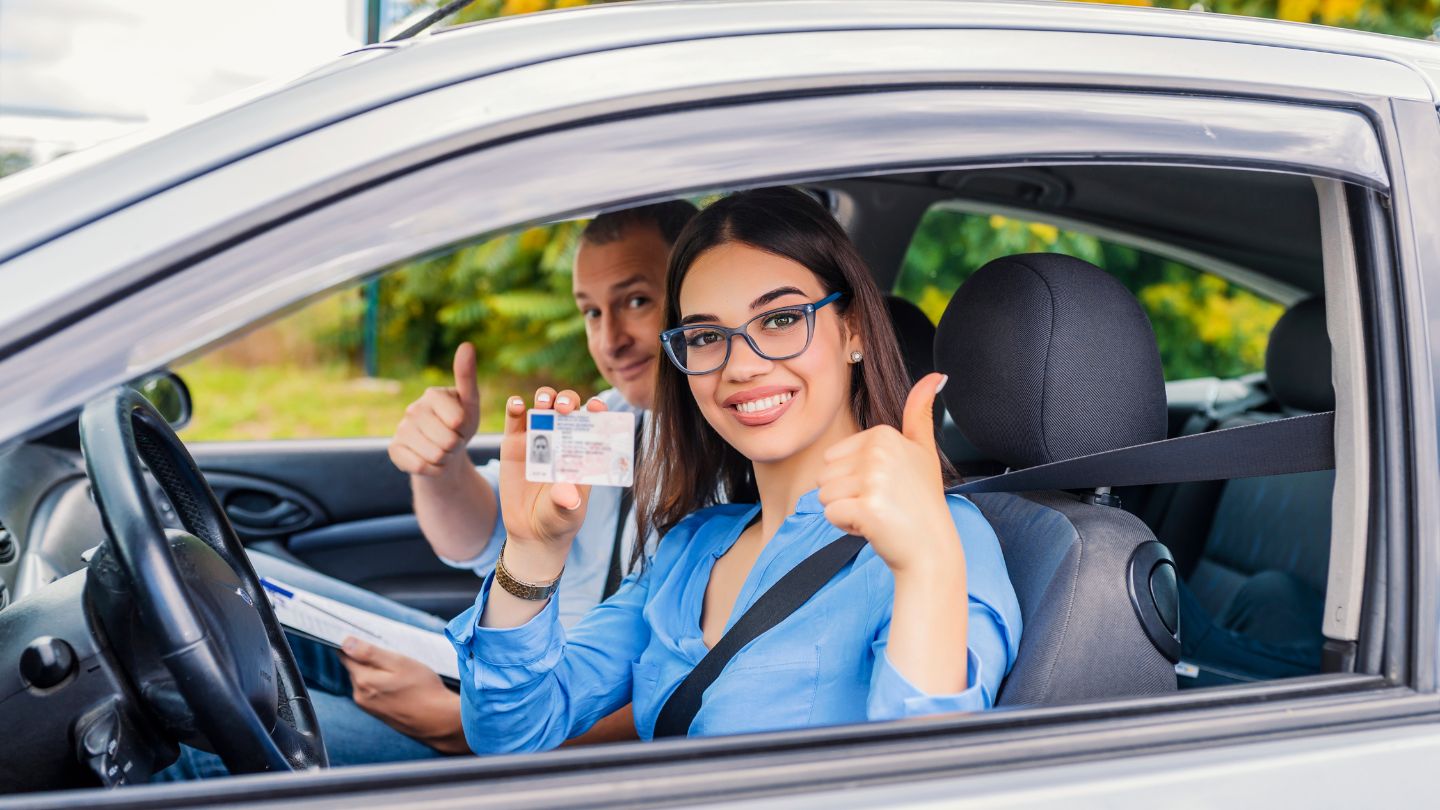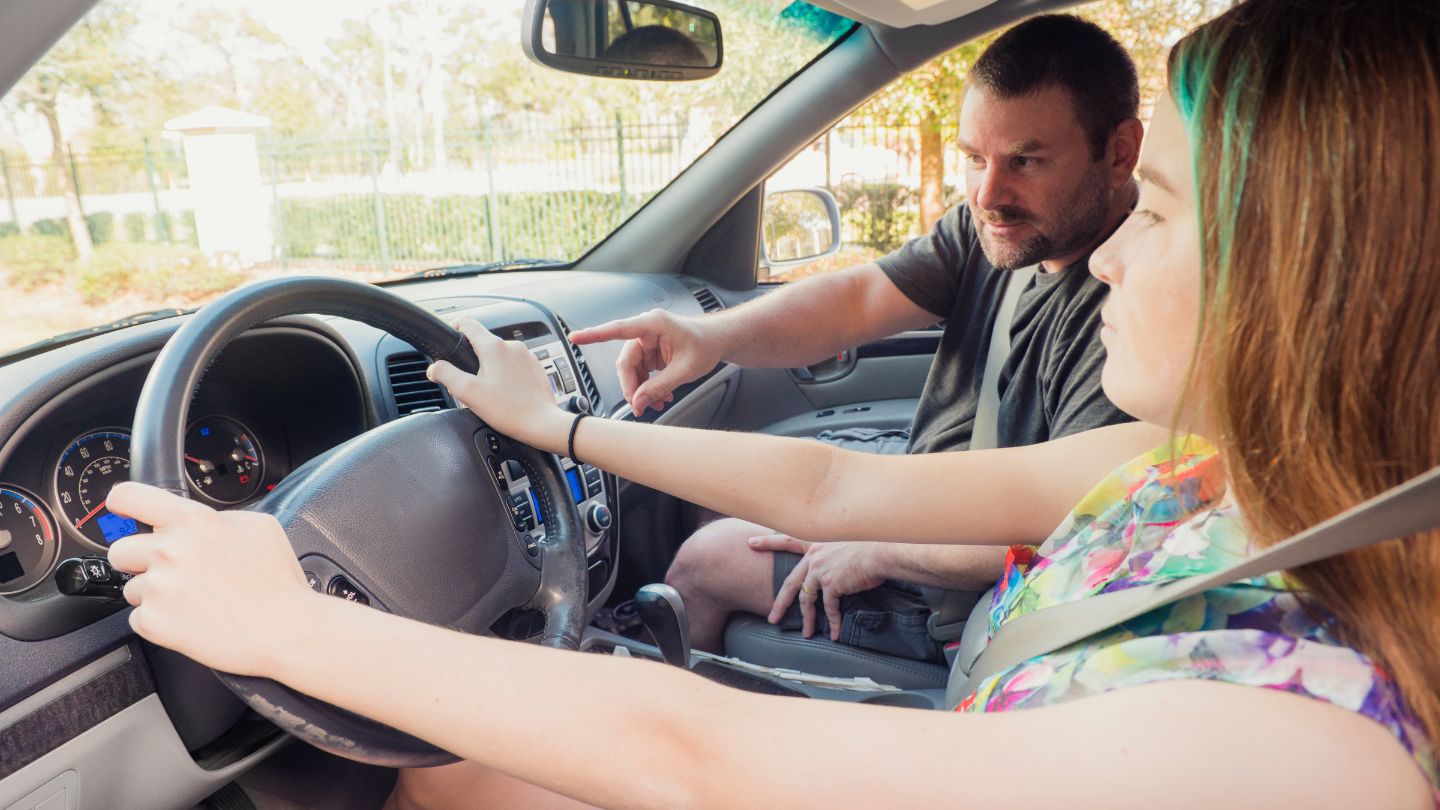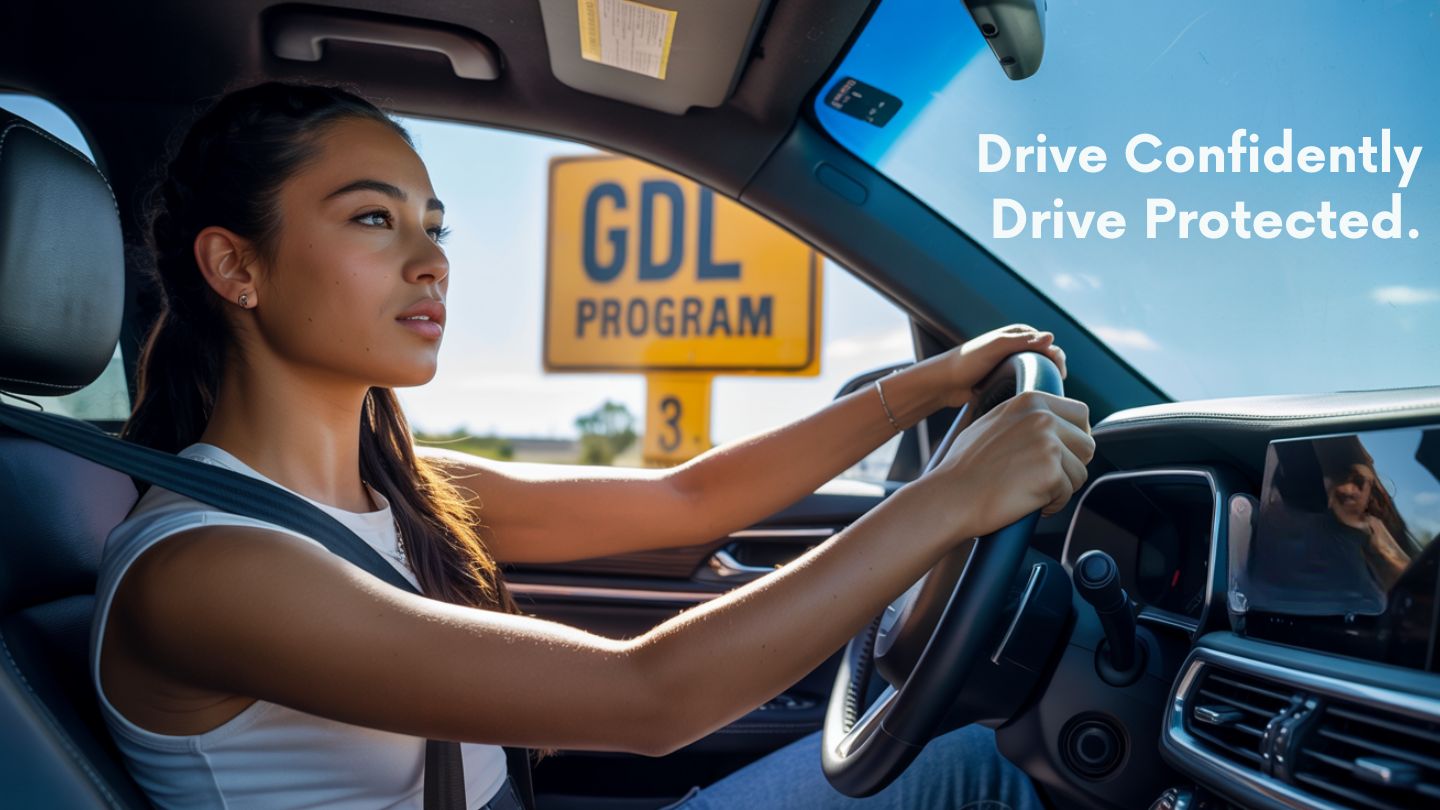Gaining driving experience in a structured and supervised manner is essential for young and first-time drivers. Texas uses a phased licensing system designed to build skills gradually while promoting road safety. This system balances independence with oversight, helping reduce accidents among new drivers. Each stage comes with specific requirements and restrictions to ensure readiness for the next level. In this blog, we will explore the stages, rules, and steps involved in the GDL program.
Key Takeaways
- The Texas Graduated Driver License (GDL) program promotes road safety by gradually introducing new drivers to driving responsibilities through a phased approach.
- Young drivers must complete specific requirements at each stage of the GDL program, including supervised driving practice, coursework, and adherence to restrictions to obtain a full driver’s license.
- The Impact Texas Drivers (ITD) course is a mandatory component for new drivers, emphasizing the dangers of distracted driving and the importance of safe driving habits.
Texas Graduated Driver License Program Overview

The Texas Graduated Driver License (GDL) program is part of a nationwide initiative aimed at enhancing road safety for new drivers. Initiated on January 1, 2002, the Texas GDL program seeks to reduce the risk of accidents among teen drivers by gradually introducing them to the responsibilities of driving. The primary goal is to provide young drivers with the experience and skills needed to navigate Texas roads safely, in accordance with GDL laws.
The program adopts a phased approach, allowing teens to develop their driving skills incrementally. This structured method is designed to promote safer driving habits and reduce the likelihood of accidents. The Texas GDL program is divided into three stages: the learner’s license, the provisional license, and the full unrestricted license.
To obtain a full, unrestricted driver’s license, young drivers must complete all the requirements of the GDL program, typically by the age of 18. Each stage builds on the previous one, ensuring that drivers are well-prepared for the next level of driving independence. This progressive approach not only enhances driving skills but also instills a deep sense of responsibility and respect for Texas traffic laws.
Phase One: Learner License Requirements
The journey to becoming a licensed driver in Texas begins with obtaining a Texas learner’s license. To be eligible, applicants must be between the ages of 15 and 17 years old and provide proof of Texas residency. This initial step is crucial as it lays the foundation for responsible driving.
When applying for learner’s permits, teens must:
- Present documentation verifying their identity, such as a birth certificate or a U.S. passport.
- Be accompanied by a parent or guardian to the Department of Public Safety (DPS) appointment, ensuring family involvement.
- Complete the application form for an instruction permit.
- Pay the required fees.
Another key requirement is the completion of a minimum of six hours in a driver education course. This driver education course equips young drivers with the essential knowledge of Texas traffic laws and safe driving practices, setting them up for success as they embark on their journey behind the wheel. Enrolling in a driver’s education program for your teen can provide the structured learning and expert guidance necessary for building strong driving skills from the start.
Supervised Driving Practice for Learner License Holders
Once a valid learner’s license is obtained, the next crucial step is supervised driving practice. The GDL system mandates a minimum of 30 hours of supervised driving practice, ensuring that young drivers gain hands-on experience in a controlled and safe environment. This practice is invaluable for developing driving skills and building confidence on the road, meeting the GDL requirements.
During this phase, the learner must be accompanied by a licensed adult who is at least 21 years old. This experienced driver serves as a mentor, providing guidance and feedback to help the teen navigate various driving scenarios. The presence of a qualified adult is essential for addressing any immediate questions or concerns that may arise while driving.
Supervised driving practice is more than just a requirement; it’s an opportunity for young drivers to learn safe driving practices and understand the importance of following traffic laws. Consistent practice under the watchful eye of an experienced driver helps instill responsible driving habits that will benefit them throughout their driving journey.
Transition to Provisional License
After completing the learner’s license phase, the next milestone is obtaining a provisional license. To qualify, applicants must be at least 16 years old and have held their learner’s license for at least six months. This period allows young drivers to accumulate the necessary supervised driving hours and gain valuable experience behind the wheel.
Before applying for a provisional license, learner license holders must complete at least 30 hours of supervised driving, including 10 hours of night driving. This ensures that they are prepared to handle different driving conditions. Additionally, applicants must pass the driving test administered by the Texas Department of Public Safety (DPS) to demonstrate their driving skills and knowledge of Texas traffic laws.
The provisional license comes with certain restrictions to ensure the safety of young drivers. For example, they are not allowed to drive with more than one non-family passenger under 21, except for work, school, or emergencies. These restrictions are designed to minimize distractions and reduce the risk of accidents during this critical learning phase.
Provisional License Restrictions and Responsibilities
A provisional license in Texas comes with specific restrictions to ensure the safety of young drivers. One key limitation is that provisional license holders may not have more than one non-family passenger under 21 in the vehicle, as carrying passengers significantly increases the risk of teen driver crashes. This passenger restriction is designed to reduce the likelihood of accidents involving teen drivers, especially when there are distractions in the passenger seat.
Driving between midnight and 5 a.m. is prohibited, except for school, work, or medical emergencies. This rule helps reduce the likelihood of teen driving accidents during nighttime driving hours when visibility is lower and fatigue is more likely.
Provisional license holders are also prohibited from using cell phones or any wireless devices while driving, including hands-free devices. This restriction ensures young drivers focus entirely on the road, promoting safer driving habits.
Compliance with these restrictions is crucial for maintaining driving privileges and progressing to a full, unrestricted driver’s license. Violating these rules can result in penalties and delays, underscoring the importance of responsible driving during this phase.
Full Driver License Eligibility
Completing the final stage of the Texas GDL program is a significant milestone for young drivers. Generally, individuals must be 18 years old and have met all GDL program requirements, including adhering to provisional license restrictions and demonstrating responsible driving behavior, to be eligible for a full, unrestricted driver’s license.
Transitioning to a full driver’s license signifies that the driver has gained sufficient experience and skills to navigate the roads independently. By this stage, young drivers have developed safer driving habits and a comprehensive understanding of Texas traffic laws, reducing the likelihood of teen driver crashes.
Completing the GDL program and obtaining a full, unrestricted driver’s license ensures that new drivers are well-prepared and confident to drive safely on Texas roads, beyond merely meeting legal requirements.
Minor Restricted Driver License (Hardship License)
In certain circumstances, young drivers under 16 may be eligible for a minor restricted driver’s license, also known as a hardship license. This special license is available to minors who can demonstrate a necessity to drive, such as family emergencies, educational obligations, or employment.
Applicants for a hardship license must provide proof of hardship, such as employment evidence or statements from community members. This ensures the license is granted only to those who genuinely need it and cannot otherwise meet their essential needs without the ability to drive.
A hardship license permits minors to drive for specific purposes, but not for general activities like social outings. This restriction ensures young drivers use their license responsibly and only for essential reasons, maintaining the integrity of the Texas GDL program.
Impact Texas Drivers (ITD) Course Requirement
The Impact Texas Drivers (ITD) course is a mandatory component for new drivers aged 15-24 in the Texas GDL program. It must be completed before taking the driving skills test and educates young drivers about the dangers of distracted driving and responsible driving behavior.
The ITD course consists of a three-part video that highlights the risks associated with distracted driving, including the use of cell phones and other wireless communication devices. The course is designed to be engaging and informative, using factual evidence and personal stories to drive home the message.
Completing the ITD course equips young drivers with a deeper understanding of the consequences of distracted driving and the necessity of maintaining focus on the road. This knowledge is crucial for developing safer driving habits and reducing the risk of teen driving accidents.
Safe Driving Practices for Teen Drivers

Safe driving practices are central to the Texas GDL program. Supervised driving practice helps teens develop essential driving skills in a controlled and safe setting. Parents play a vital role by providing guidance and monitoring their teens’ adherence to safe driving habits.
Open discussions between parents and teens about the risks of driving and the importance of following safety regulations can reinforce responsible driving behavior. The ITD course supports this by educating young drivers about the dangers of distracted driving and the necessity of focusing on the road. Reviewing teen driving safety tips together can further help new drivers adopt safe habits and make informed decisions behind the wheel.
Emphasizing safe driving practices and ensuring new drivers are well-prepared, the Texas GDL program aims to reduce teen driver crashes and promote a culture of responsible driving among young drivers.
Benefits of Online Driver Education in Texas

Online driver education offers numerous benefits for new drivers in Texas. One of the most significant advantages is the flexibility it provides, allowing learners to study at their own pace and convenience. This means that busy individuals can spread the required hours over a period that suits their schedule.
Another benefit is the cost-effectiveness of online driver education courses. They are generally more affordable compared to traditional classroom programs, making them accessible to a wider audience. Additionally, students can take the written examination from home, further simplifying the process.
Completing a driver’s education course online allows for quicker access to obtaining a driver’s license. After passing the course, students can apply for their permit online, eliminating the need for an in-person test. This convenience makes online driver education an appealing choice for many new drivers in Texas.
Preparing Young Drivers for Success
The Graduated Driver’s License (GDL) Program in Texas provides a structured approach to help new drivers build the skills and experience needed for safe driving. By progressing through its stages, young drivers can gain confidence, reduce risks, and develop responsible habits behind the wheel. Following the program’s requirements ensures compliance with state laws while prioritizing safety for all road users.
At Easy Drivers Ed, we offer comprehensive courses tailored to meet state guidelines, helping students complete the requirements for driver’s ed in Dallas, TX, with confidence and ease. Our engaging, state-approved training equips new drivers with the knowledge and skills to navigate every stage of the GDL process successfully.
Frequently Asked Questions
What is the purpose of the Texas Graduated Driver License (GDL) program?
The purpose of the Texas Graduated Driver License (GDL) program is to improve road safety for new drivers through a structured, phased approach that allows them to gain essential driving experience and skills. This methodical training helps prepare young drivers for the responsibilities of operating a vehicle safely.
What are the key requirements for obtaining a learner’s license in Texas?
To obtain a learner’s license in Texas, applicants aged 15 to 17 must provide proof of residency, present identity documentation, be accompanied by a parent or guardian, and complete at least six hours in a driver education program. Meeting these requirements is crucial for starting the journey toward licensure.
What restrictions apply to provisional license holders in Texas?
Provisional license holders in Texas are restricted from driving with more than one non-family passenger under 21 years old, cannot drive between midnight and 5 a.m., and are prohibited from using cell phones or wireless devices while driving. Adhering to these restrictions is crucial for maintaining safety on the roads.
What is the Impact Texas Drivers (ITD) course, and why is it important?
The Impact Texas Drivers (ITD) course is a mandatory educational program for new drivers aged 15-24 that addresses the dangers of distracted driving. Its importance lies in promoting safe driving practices prior to the driving skills test, ultimately aiming to reduce accidents among young drivers.
What are the advantages of taking an online driver education course in Texas?
Taking an online driver education course in Texas provides flexibility and convenience, allowing you to study at your own pace and complete the written examination from home. Additionally, it can be more cost-effective and simplify the process of applying for your permit.

